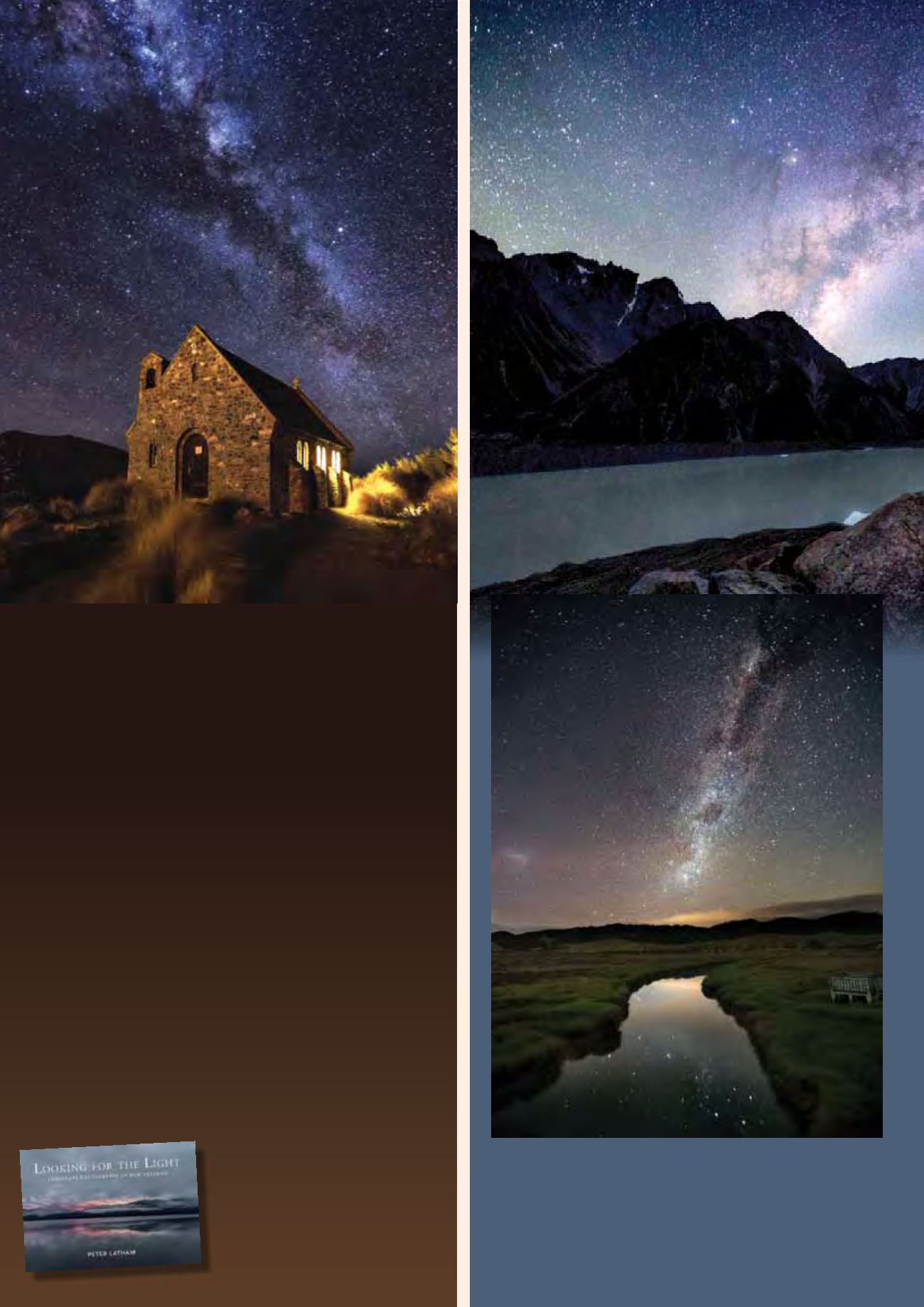

by PEtER LAthAM
The village of Tekapo (pop 300) is one of three small communities
within Aoraki Mackenzie International Dark Sky Reserve, recently
earning a five star rating for being almost entirely free of light
pollution. Lake Tekapo, stretching 25km north to south, radiates
with a magnificent turquoise-blue hue, which is caused when
the violet rays of sunlight are scattered by fine glacial silt that is
suspended in the water.
The church sits at the south shore of the lake. It is believed
to be the most photograhed church in NZ – and very possibly
the world.
“With ideal astrophotography conditions of clear skies and a new
moon, I arrived after 10pm on this evening to capture night sky images
with Lake Tekapo’s ‘Church Of The Good Shepherd’, but the constant
stream of tourist car headlights and people’s torches killed any prospect
of good images!
Ever since the Mackenzie Basin (about midway between Christchurch
and Queensland along Route 8) was declared an International Dark Sky
Reserve in 2012, Lake Tekapo and its iconic church on the lake has
exploded in popularity.
So I returned at 3am for another attempt – by which time the Milky Way
was now overhead, dictating a different composition to what I had planned
– shooting in front of the church, looking straight up. This was in the middle
of winter and the freezing conditions were a challenge to keep my lens clear
and my fingers moving, as both wanted to constantly freeze over!”
Peter Latham
specialises in
photographs of exceptional size, for
both high resolution framed prints and
architectural use. See his showroom at
Mosaic Gallery in Whitianga, where his
coffee table book “Looking for Light”, is
available ($79.95, signed). His jacketed
special boxed editon is currently sold
out and being reprinted.
Church of the Good Shepherd
Otama Wetlands
by IAN PREECE
“The Otama Wetlands and dunes are a beautiful and very historic place.
It is a very good thing that they have been preserved. Normally I try
not to photograph the stars looking towards the east because of the
ambient light from Auckland, which you can see above the horizon. In
this case the reflection of the light in the creek brings out a range of
colours that I think make the shot.”
















